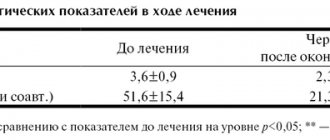Elements of the Arlilia Center curriculum and analysis of their effectiveness
This short article will not contain complex terminology and unclear formulations.
We will try to describe in simple words what is happening within the Arlilia center. And you and I will do this based on the feedback from the participants in their training program. I am often approached by stutterers who have previously been trained at this center. This applies to both adults and children (together with their parents). Over the course of 7 years, I communicated with hundreds of people who stutter, some of whom tried to overcome stuttering with the help of the Arlilia Center (L.Z. Harutyunyan). I have always been interested in how effective this or that method or program for overcoming logoneurosis and correcting stuttering can be. Unfortunately, most people have not been able to make significant progress towards normalizing speech with the help of the tools and solutions of the Harutyunyan curriculum. I’m talking about those with whom I communicated personally on Skype or on various social networks, as well as those whose reviews I read on various forums dedicated to this problem. Maybe in general the situation is not so bad, because a large number of people simply do not leave reviews... I will only describe what I personally heard or saw. First of all, I was interested in the question “What happened during the training?” Everyone unanimously says that a lot of time was devoted to waaaaaaaaaaaaaaaaaaaaaaaaaaaaaaaaaaaaaaaaaaaaaaaaa go go is the time. Plus, you were encouraged to tap the rhythm (on vowel sounds) with your fingers along with your speech. And these recommendations had to be followed not for a few days or even a few weeks, but for several months. Here it becomes clear to me why a person who stutters may not receive significant positive dynamics while studying in this program. The answer is very simple. At a minimum, it is unnatural, and even, in my subjective opinion, simply ugly. For me, an understandable stutter is better than an incomprehensible “stuck” on vowels, or whatever this “solution” is called within the framework of the center itself... This is never about normal, comfortable and free speech. Yes, in this case the speech will be without stuttering, but is this the main goal? This is just a disguise of the problem, under such a “solution”, the basis for which is the method of therapeutic phonetic rhythmic reconstruction of speech by Yulia Borisovna Nekrasova. Yes, I know a lot about this method, and I perfectly understand its composition and potential effectiveness. By the way, the 3-day program “Etalon” by Roman Snezhko is also based on this method (read more about the effectiveness of this course in this article) So, the methodology itself has a logical basis and, in principle, is a good basis for building a further program on sustainable (!) normalization of speech. Only here, as in any other difficult matter, there are many pitfalls. This method in itself perfectly demonstrates the potential of a stutterer to speak without any strain. At a minimum, this proves that there are no problems in the cerebral cortex, and all speech blockages can be independently and consciously avoided with the help of such a rhythm. But! This solution in itself is not a cure for stuttering! For the sake of objectivity, we note that there are people who stutter for whom it is really reasonable to sometimes use such slow speech. These are people with a very strong degree of stuttering, who sometimes literally cannot utter a word... Yes, in this case you can still use this “trick” (crutch) in order not to torment the listener and at least somehow utter/squeeze out a word ... And in general, in my opinion, the process of such slow speech with the tapping of the rhythm in the center of Arlily is too drawn out. Well, for a day, two, three, at an intermediate stage you can sometimes lean towards this “style”. But then you need to work on a normal speech rate, paying more and more attention to this very important aspect. Otherwise, in most cases, your consciousness simply will not get used to this way of speaking, simply because it will seem stupid and not normal. After which it will get back on track, choosing an “understandable” stutter. This is what happens to many former students of this center.
Article:
Here we outline one of the most important components of the methodology we have developed, which constitutes its distinctive feature and main core.
Namely: the involvement of the “second articulatory apparatus of man” - the fingers of the leading hand - in the act of speech. Taking into account the complexity of the symptom complex of stuttering, the need to identify the central link in the chain of pathological changes becomes obvious. We consider speech convulsions to be the starting point of speech and mental disorders in stuttering. As practice has shown, having managed to prevent the appearance of spasms in the speech of patients, we largely eliminate secondary neurotic layers.
If we proceed from the hypothesis that the main cause of speech spasms during stuttering is a violation of the internal synchronization of the speech cycle, then it is natural to assume that with the help of external synchronization this defect can be overcome. In fact, by using external rhythm sensors, such as auditory and tactile metronomes, the speech of people who stutter is significantly improved.
However, the use of such a technique creates uniform robotic speech, devoid of emotional coloring and of little use for communication. In addition, the effect of improving speech quickly disappears when you abandon these devices. An interesting example of improvement in the speech of stutterers with external synchronization is conjugate speech. Here we are no longer dealing with uniform, but with normal, intonation-colored speech, but at the same time it is difficult to prolong the effect obtained and transfer the skill of non-convulsive speech to natural conditions.
Synchronizing speech with the movements of the fingers of the dominant hand allows one to overcome the disadvantages of both of these methods. According to M. M. Koltsova, who studies the motor activity and development of the child’s brain, the movements of the hands and fingers are so phylogenetically and ontogenetically related to the movements of the vocal apparatus that there is every reason to consider them as a speech organ similar to the articular apparatus.
From here it is clear how important and natural the correlation of speech with finger movements is. Hand movements in the treatment of stuttering have been used by other authors. For example, N.I. Zhinkin recommended using gestures to liberate and distract from the act of speech. Movements of the palms for the same purposes were proposed by A.I. Bogomolova, development of the speech-manual reflex - A.G. Shembel and S.S. Lyapidevsky.
In our technique, the hand has a completely different function. It does not distract from the act of speech, does not accompany it in a mechanical way, but, anticipating the pronunciation of each syllable, leads the speech along with itself. This allows, from the very first lessons, almost all stutterers (initially at a slow pace) to obtain varied intonated speech without spasmodic delays.
N.I. Zhinkin pointed out: “As soon as speech switches to chanting, metric pronunciation of words, stuttering disappears, because all words are aligned according to the place of stress, according to syllabic dynamics. Stuttering resumes during conversational speech, because depostricity appears—the syllables vary in duration. Each new change of meter must be warned, only in this case the speech effectors will work normally...
Consequently, speech exercises and breathing work cannot lead to a positive effect. The practical task of eliminating the defect comes down to the question of restoring self-regulation of the speech system. You need to put a force forward, which, like on a “tugboat,” will pull the variable lead along with it; in the future it can be weakened and, in the end, removed altogether.”
In our proposed method, the fingers of the leading hand serve as such a “tug”. With their sequentially organized movements, they seem to type syllables into different metric patterns of words, coordinate in time the work of all speech links and systems, establishing the mechanism of internal synchronization of the natural speech cycle that is disrupted in people who stutter.
By eliminating, first of all, the very cause of speech spasms, we thereby compensate for the physiological deficit characteristic of stutterers. The movements of the fingers of the leading hand, among other things, dictate the rhythmic-intonation pattern of the phrase to the speech apparatus. They help to cope with the speech-damaging consequences of stuttering, such as arrhythmia, lack of correct merging of words in the syntagm, and distortion of intonation.
It should be emphasized that there are no special requirements for the tempo of speech. It is determined by the patient’s motor capabilities at all stages of work. Eventually, everyone develops a natural speech rate. By debugging the mechanisms of internal synchronization in this way, we restore the brain’s ability to time, or, in the words of N.I. Zhinkiia, we restore the syllabic dynamics of speech.
Another important feature of the megod is that a new speech stereotype is formed not only with the help of analyzers of the natural speech cycle, which can be disrupted in people who stutter, but also through a number of other intact analyzers associated with movements of the fingers (motor kinesthesia, tactile sensitivity). This contributes, thanks to reverse afferentation, to a much faster formation of speech motor skills that are resistant to stress.
The proposed method of stuttering correction is universal and can be successfully used in the treatment of both neurotic and neurosis-like stuttering.
In the first case, the advantage of the method is that in patients the fixation on the act of speech is significantly reduced, since the responsibility for speech technique (tempo, merging of words in syntagm, intonation pattern of a phrase) is taken by a trained hand, and stutterers can finally, like All normally speaking people, first of all, think about the meaning of the statement. Their obsessive thoughts, fear of speech, and tricks gradually disappear. In other words, the proposed method itself gives a clearly expressed psychotherapeutic effect.
For neurosis-like stuttering, this method of treatment makes it possible to compensate for the physiological deficit by including a number of intact analyzers in alternative feedback chains. In speech therapy practice, mixed cases are most often encountered, combining both neurotic and residual organic disorders - hence it is easy to imagine how important the quality of the treatment method is its versatility.
The technique also allows us to solve the problem of automating the skill of natural, non-convulsive speech. The hand trained during the main course becomes a memory of the new stereotype, and over time, an “automatic controller” of the patient’s speech. The process of automating a motor skill occurs in conditions of natural communication and is only supported through a system of microcourses.
The basic rules of the hand are as follows. The patient's leading hand should reproduce the rhythmic-intonation pattern of the spoken phrase. To do this, the patient places his hand on his thigh, with his fingers slightly bent, as when playing the piano. The pronunciation of the first syllable of each syntagm, as well as all strong positions in it, follows a stronger and longer press of the thumb. The corresponding syllables, like the initial syllable in the syntagma, are pronounced most clearly.
With this type of hand movements, the syllables seem to be combined into rhythmically organized word structures, and their intonation-formed and consistent pronunciation is ensured. It is very important that speech synchronized with the hand does not retain the memory of previous stuttering, so that the emerging skill is truly new, associated with calmness and improving prosody...
The system of intensive speech therapy sessions for stuttering correction using the hand consists of several stages.
At the first stage, which lasts five days, the main task is to form in stutterers the skill of free sound production and syllable pronunciation, associate it with a state of muscle relaxation, calmness and, at the same time developing fine motor skills, prepare the leading hand for the role of a natural speech synchronizer.
At the second stage, lasting two to three days, we focus on training the thumb of the dominant hand, the technique of correctly extracting sounds at the syllable level, working on basic intonation skills, and continuing to improve relaxation techniques.
The third stage (from five to six days) consists of synchronizing speech with the movements of the fingers of the leading hand, already at the level of words and simple phrases. Work on intonation becomes more difficult and, accordingly, the technical requirements for the hand increase. In addition, the skills acquired at previous stages of work are improved.
The fourth, final stage (10 days) is associated with the final formation of a new speech-motor skill in people who stutter, a speech algorithm synchronized with the movements of the fingers of the leading hand. Here, speech material of a greater degree of complexity is used, and the primary consolidation of the skill occurs.
Work on intonation continues. Speech resistance to stress is tested through a system of functional training. This concludes the program of the basic speech therapy course on methods of normalizing the speech of people who stutter.
During the first week after the stage of destabilization of a stable pathological state (SPS), until a new speech-motor skill is developed, a regime of silence is established: if necessary, patients use exclusively syllabic speech to communicate, which protects them from the appearance of seizures.
Thus, starting from the third day of the course of treatment, it is possible to neutralize the main link in the chain of speech and secondary mental disorders, which contributes to further amnesia of the disease and creates a positive background for speech therapy work. Uniform syllable-by-syllable speech in itself has a destabilizing effect on the UPS; its use significantly reduces the effect of emotional (personal) presence in speech.
Using a syllable at the initial stage is extremely useful for stutterers: having returned to the syllable, they seem to begin to feel the relative independence and integrity of the minimum unit of speech anew. This simplification helps patients develop an analytical approach to speech, creates an idea of it as a repeating, ordered cycle, and further serves to develop a stable algorithm for natural, non-convulsive speech.
At the same time, any long-term use of uniform syllable-by-syllable speech is hardly advisable: firstly, people who stutter quite quickly get used to speech without intonation, which makes subsequent work on its correction in general difficult, and secondly, such speech, devoid of intonation, over time begins to weigh on them. Therefore, we must strive to get away from monotonous syllable-by-syllable speech as quickly as possible... In the method under consideration, syllable-by-syllable speech is not the basis for developing natural non-convulsive speech skills in stutterers. This is only the initial stage of intensive speech therapy training...
The stuttering speech of patients, formed in childhood, is transferred to the subconscious level (turns on automatically), while the new speech motor skill is still developing and therefore requires concentrated attention, discipline, and repeated repetitions (otherwise you may not get the desired result). However, many patients are not ready for long-term meticulous work, do not know how to concentrate, get tired quickly, etc.
Therefore, we specifically engage in psychotraining with the group, teach ways to retain voluntary attention, try to increase its volume, and develop operational thinking. Such exercises can significantly increase the effectiveness of speech therapy classes in general.
The first stage has as its main task teaching stutterers the correct pronunciation of syllables, combining it with facial expressions, movements of the arms and body, a soft attack of the voice, appropriate posture, etc., as well as a new state of peace of mind for them during speech. The significance of this stage is extremely great: if we associate a defective syllable with the hand, the remaining unresolved traces of the pathological dominant can subsequently cause a new surge in stuttering. The hand must first be prepared for the role intended for it. In order to achieve a calm state of mind for those being treated during the process of pronouncing syllables, speech therapy sessions should be conducted against the background of deep muscle relaxation.
It is appropriate to say here that stutterers are practically unfamiliar with the state of calm during speech; this concept itself is devoid of clear content for them and must be developed in the process of speech therapy classes, and then in the practice of real communication. The first step leading to achieving such peace is asking questions “at the pace of achievement.” This work is carried out throughout the entire course of speech therapy training and helps to remove some of the grossest manifestations of the fears of stutterers.
Each lesson begins with autogenic training (AT), which we conduct mainly according to the A.I. method. Lubenskaya. When teaching self-regulation skills to people who stutter, we pay special attention to ensuring that the patients’ muscles in the face, neck, shoulder girdle, and arms are relaxed; the teeth should be open, the lips should be relaxed, limp, the mouth should be slightly open. We associate the onset of a state of complete rest, associated with vasodilation, muscle relaxation and causing patients to fall into a light drowsiness, with the word (symbol) “five”. And only after that we begin speech training...
The difference in our technique is that the new mental sense of self that arose after AT is first associated only with a syllable consisting of one vowel, and then with consonants and vowels. Moreover, after the AT formula, one sound is pronounced, followed by the AT formulas and again the sound. After pronouncing each syllable, complete relaxation follows, during which the patient’s head smoothly lowers, touching the chin to the chest; arms and shoulders also “fall off”.
Gradually, each pause during the training speech is filled with calmness and, in combination with AT formulas, becomes like a “microdose of valerian”, which patients regularly receive throughout the entire session and during home training. Against the background of relaxation and calm associated with the word “five,” each speech segment (in this case, a syllable) is pronounced. After which again a signal for relaxation and calm. The head, arms, and shoulders should really relax. And so on at the beginning and end of each syllable. Such an exaggerated technique is absolutely necessary for stutterers at first, as well as contrasts: tension - relaxation.
Over time, we abandon the grotesque, but the memory remains of the ability and need to calmly engage in speech, to relax during a pause. This memory, developed with the help of conscious control and summing up the sensations of repeatedly performed exercises, tightly tied to the conditioned reflex reference word (“five”), is the most durable. At the same time, as part of the correction of the prosodic side of the speech of people who stutter, we begin teaching patients the soft attack of sound and the correct synthesis of a syllable.
By the end of the first stage, people who stutter generally acquire the skill of freely producing sounds on a syllable. This skill is associated with a new amount of psychological sensations and is still under the active control of consciousness. A firmly mastered algorithm gives patients confidence that they will be able to pronounce without hesitation, technically competently, any syllable, under any conditions. At the same time, during classes we strive to concentrate the attention of stutterers not so much on the technical techniques of correct speech, but on the internal sensations associated with new speech...
Patients feel the changes happening to them extremely sensitively. According to our observations, people who stutter become active participants in treatment and begin to really believe in the possibility of positive results only when they begin to experience calmness and satisfaction from the very process of working on speech, in particular on syllables.
This becomes real in the first week of classes. At the same time, we intensively prepare the hand to help speech: we attract the attention of stutterers to the hand during AT, evoke a feeling of heaviness and warmth in the hands, a pulse beating in different fingers, etc. At the next stage, we continue to deepen and develop this connection, while simultaneously complicating the algorithm natural, non-convulsive speech.
The second stage of speech therapy training is teaching the thumb of the leading hand the technique of correct movement. This stage differs from the first only in that here all the acquired skills are closely connected with the hand, with the movement of its thumb, and then this movement conditionally reflexively evokes the whole range of sensations accompanying normal speech...
Before starting appropriate speech therapy exercises, we perform muscle relaxation and use AT elements. Patients begin speech training only against the background of muscle relaxation, in a state of deep rest. Before associating the movement of the thumb with a syllable, we cause free sounding on the syllable in people who stutter with a soft vocal attack, inclusion of support, etc., that is, we perform various vocal exercises. Only after this do we move on to training speech “with the hand.”
Exercise 1.
The starting position is the most free position. People who stutter shake their hands, then drop them onto their knees and pull their relaxed hands up to about the middle of the thigh. The hand turns out to be free and rounded (a technique used to prepare the hands when learning to play the piano). The exercise is repeated many times until the hand is truly completely relaxed and calm. It is imperative to relieve tension from the hand, otherwise it will affect the functioning of the vocal apparatus.
Exercise 2.
The hand rests loosely on the hip. Patients slowly, smoothly begin to press the thumb on the surface of the thigh (the remaining fingers, coming off the thigh, rise slightly). At the command of the finger, patients pronounce one syllable with a soft attack of sound, using the lower vocal register.
As the finger presses harder (but without tension) on the thigh, the sound of the voice intensifies; on the contrary, when the pressing force decreases, the voice sound weakens. During numerous training sessions, the work of all parts of the speech mechanism is coordinated. As a result, pressing your finger should automatically open the jaw, move the voice down, and turn on the support. Slow, soft pressing promotes the same voice delivery and correct “floating.”
After each syllable treatment - first at the sign of the speech therapist, and then independently - the stuttering hand falls off, taking a free position, which becomes a signal for general relaxation. In the future, the conditioned reflex dropping of the hand after each speech segment (in this case, a syllable) should automatically cause in stutterers a state that they associate with the word “five.”
When performing this exercise, you need to pay special attention to ensuring that the thumb command actually anticipates, and does not accompany, the work of the speech apparatus. We are forced to emphasize once again that sound production with a finger should be carried out without any tension, otherwise, by reinforcing this tension, which is certainly transmitted to the muscles of the speech apparatus, we would train stuttering.
The execution of the exercise is controlled visually and auditorily. The group organizes mutual control and uses a variety of techniques to speed up the formation of a skill (for example, a speech therapist demonstrates an exercise on his own hand and the patient’s hand). At this stage, the foundation of future speech is laid, and we need to develop in those who stutter a solid, confident skill of free sound pronunciation synchronized with the hand.
Without solving this problem, we will not be able to move forward and achieve sustainable positive results in treatment. Each time, coordinating a syllable with the movement of the fingers of the leading hand, we simultaneously train (in a simplified form) “input into speech”, and we debug both the motor and neuropsychological parts of the program.
And although the entire speech program of a future utterance is so far reduced only to a syllable, each launch of such an elementary program guarantees against speech spasms, ensuring self-regulation of speech mechanisms, and the readiness of the speech apparatus to perform more complex tasks.
According to the law of self-regulation, the syllabic program (usually 7...2 syllables) implemented in the speech apparatus is set already at the level of the first syllable, that is, the impulse signal entering the brain from the thumb forms the syllabic dynamics of the entire speech segment. Other fingers are assigned a smaller role - to track the tempo of the phrase, place intonation accents, etc.
The third stage is aimed at developing speech skills with the hand, developing an algorithm for multi-metric intonated speech at the word or syntagm level, consisting of no more than two or three words. Around the middle of the second week, patients begin to experience increasing calm during speech training. The pronunciation of a syllable, while still under the control of consciousness, becomes habitual and is carried out without speech convulsions and delays, and therefore sound phobia gradually disappears.
This allows patients to freely, unhinderedly express their emotions in speech, feel the beauty of a free-sounding voice - feel the “soul” of sound. However, no matter how much we teach patients to intonate on a syllable, no matter how great the group’s success in mastering this technique and self-regulation skills, the syllable remains a syllable, and its pronunciation is a purely training act, and people who stutter understand this perfectly well.
An orderly speech training algorithm, naturally, cannot remove the fears and obsessive thoughts associated with many years of speech practice. According to our observations, disautomated speech, destroyed by stuttering, is most often perceived as a kind of chaos, where fear-tinged sounds and “difficult” words reign, and therefore one has to constantly resort to tricks to get around dangerous turns of speech, behind which habitual spasms are hidden.
People who stutter are frightened by the very unpredictable flow of speech. For them, stuttering is a fetish, and in the mythologized chaos of the speech flow, they, as a rule, do not see the most elementary order. Therefore, when moving to training speech at the level of syntagma and short sentence phrases (the third stage of speech therapy classes), the group may experience certain difficulties.
In an effort to eliminate a possible psychological barrier, at the beginning of this stage we conduct a new explanatory conversation with the group, in which we provide basic information about the actual division of speech and introduce a simplified concept of syntagma. We explain to stutterers the meaning of the upcoming stage, which is to develop a simple stereotype in them, learn a new speech motor skill, and train their hand in basic intonation techniques.
In the future, this simple (but certainly correctly mastered and memorized) algorithm will make it possible to purely automatically decompose the speech flow into short speech segments of syntagma, and the hand, taking care of the speech technique, will solve the usual problem every time, debugging the self-regulation of the speech mechanism, relieving anxiety , fear and expected stumbles.
After the conversation, we move on to training. The general principles of organizing speech therapy classes remain the same: first - concentration and relaxation, then - voice training, and only after that - a new cycle, new exercises.
Exercise 1.
The hand rests loosely on the hip. By pressing the thumb we launch successive rows of open syllables (2-3-4-5). Each syllable is “sung” with emphasis, and the pressing of each finger must be synchronized with the pronunciation of a separate syllable. The force of pressing controls the strength of the voice. In fact, we have here a sample of uniform speech at a slow pace, through which the technique of pronouncing a number of syllables synchronized with the hand is fine-tuned.
The requirements for each finger when performing the exercise are, in principle, the same as for the thumb. But since the first finger plays the role of a trigger mechanism, sets the program for the speech apparatus, the duration of the first syllable in a syllable series will always be slightly higher than that of subsequent syllables. During the exercise, we make sure that the stuttering person’s voice remains supported, that a soft voice delivery is maintained, etc. In other words, our task is to preserve the previously developed syllable technique and transfer it to work with syllables.
While maintaining the necessary sequence of finger movements (1-2-3-4-5), we make sure that all fingers, except the working one, are free and relaxed. At the end of each series of syllables, the hand drops, there is a pause (“five”), after which those who stutter shake the hand, drop it on the hip, teaching it to relax again and again. The exercise is repeated until it is performed accurately.
Exercise 2.
Its task is to develop the skills of natural multimetric speech, synchronized with the movements of the fingers of the leading hand. The work begins with pronouncing words with different metrical structures. First, one-, two-, three-, four-syllables are pronounced with stress on the first syllable, and then with stress on the second, third, and fourth syllables. During the exercise, the speech therapist carefully monitors the position of the hand.
It is necessary to achieve a clear “floating” from each patient, which not only ensures the correct speech technique, but also sets the appropriate pace for it. The stressed syllable is highlighted each time with a stronger and longer press of the corresponding finger. Unstressed syllables are only tracked by gently pressing the fingers on the surface of the thigh. Particular attention should be paid to the smooth transition from syllable to syllable within words.
It has been noticed that in spoken speech (as well as in singing), people who stutter less often experience difficulties in phrases with a strong position (stress) on the first syllable. And since the main goal of all exercises is to ensure a state of calm, a sense of order during speech, when pronouncing a syntagma we emphasize the first syllable, achieving some lengthening of it in comparison with other syllables, except for the stressed one.
Patients, as a rule, strive to equalize the duration of the first syllable with the stressed one, which entails the appearance of monotonous, inexpressive speech. When conducting exercises, you need to avoid this typical mistake and achieve the correct ratio of the duration of stressed and unstressed syllables. Maintaining their dynamics at a slow pace from the very beginning of training is an important condition for the formation of a stereotype of natural multimetric speech in the future.
With the transition to full-fledged words, methodological tasks become more complicated, and above all this concerns increasing requirements for intonation. First, we teach patients to convey the literal meaning of a word using intonation, then the contextual meaning. And finally, work begins on combining words and elementary phrases. Now we teach patients to emphasize logical stress with a stronger and longer finger press, and achieve unity in the pronunciation of syllables in the syntagm.
If the number of syllables in a syntagm is more than five, then the fingers trace the syllables, starting from the fifth, in the opposite direction (5-4-3-2-1). Intonation skills are practiced on different combinations of words placed in different contexts, and all kinds of intonation stamps are used.
By the end of this stage, patients acquire, at a slow pace, the skill of intoned speech with the participation of the hand within the syntagma. Gradually, the hand becomes an actual synchronizer of speech and takes control of its technique. Relaxation takes on a less grotesque character: patients continue to develop and consolidate their speech skills with the hand within the framework of the following algorithm: pause (relaxation and calmness) - speech - pause (again relaxation and calmness) - speech, etc.
The fourth stage is working on the text. Initially, for speech therapy training, small-volume texts familiar to patients are used, on which the technique of speaking with the hand is developed. Each sentence is divided into the minimum possible syntagms, in the pauses between which patients should have time to relax, relieve muscle tension, and feel calm.
Over time, more complex texts are used, sentences are divided into natural syntagms, and the length of pauses between syntagms decreases. And at this stage, work on intonation continues. To teach patients expressiveness, a phrase is pronounced without a hand, using gestures, then the melodic pattern is transferred to speech with a hand. Intonation skills are practiced on song, poetry, and prose texts.
Reviews from people who stutter about taking classes at the Arlilia center
You can write a lot about the feedback from various people regarding taking a particular course. But, as they say, it’s better to see once. This video shows a teenager who stutters, who previously spent 1 year training using the method of “Sustainable normalization of the speech of a stutterer” by Professor L.Z. Harutyunyan.
Stuttering in a teenager | We studied at Arlilia for 1 year. Discussion of the effectiveness of the curriculum
In general, reviews vary. Someone will get very good help in a certain place, but someone, unfortunately, in the same place will not be able to maximize their potential. Situations are different, and, of course, each case is individual. It cannot be said that if several people speak negatively about a place, then this place is supposedly bad. Perhaps, in addition to a dozen similar reviews, there are a good hundred others, with a more positive picture. Anything is possible. It’s just that for some reason lately everyone who addresses me after Arlilia and Lisok has very poor speech. And there really is a lot to work on. What was covered in 1 year can be completed in a few days, and immediately pay great attention to comfortable speech at a normal (!) pace.









